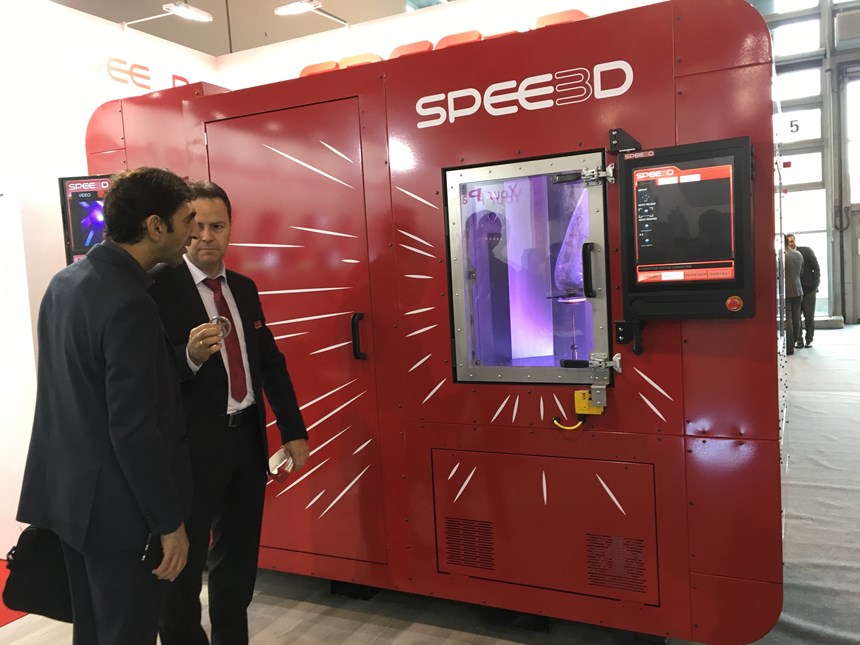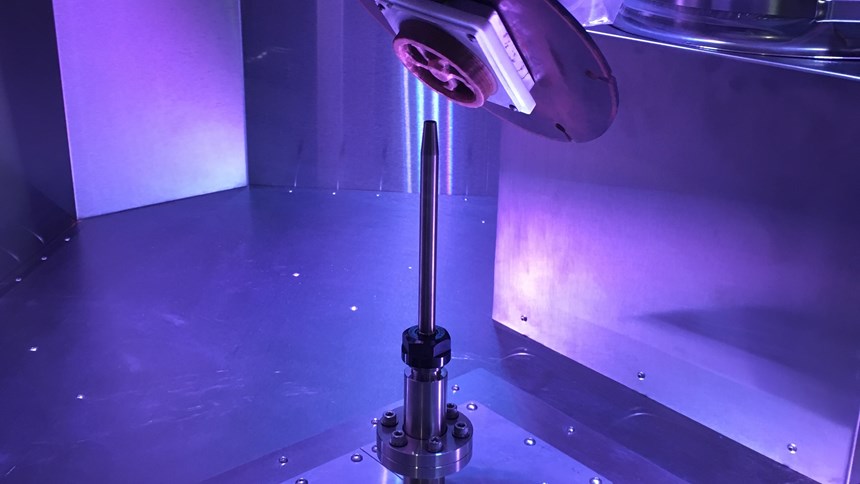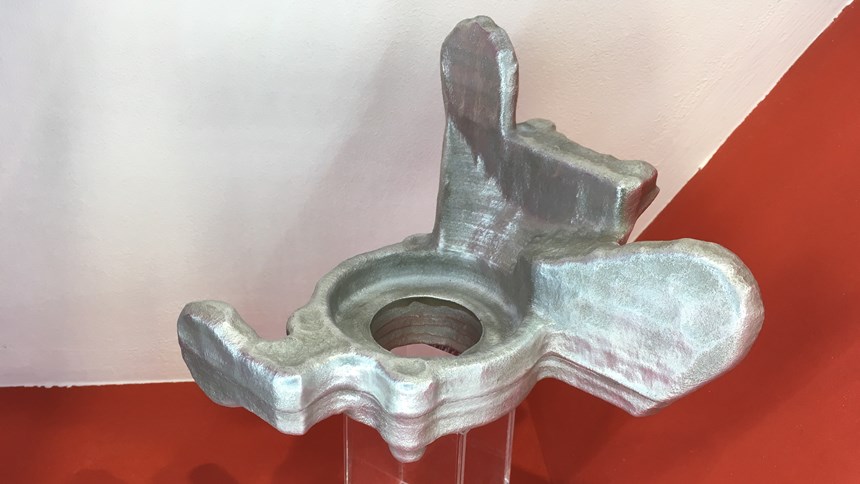Printing Solid, Simple Metal Parts in Minutes, Spee3D Process Is Competition for Casting
Kinetic energy additive process bonds metal not through melting, but with the use of compressed shop air.
When I met Byron Kennedy last year at the Formnext show, he glanced around the exhibit hall floor and admitted, “We are not competing with 99 percent of the people here.” Other metal additive manufacturing technologies such as powder-bed fusion make medical implants or aircraft fuel nozzles. His metal 3D printing technology makes brackets and other seemingly simple metal parts—but his process makes these parts quickly and cheaply.
Kennedy is the co-founder and CEO of Spee3D, an Australian company that has developed “supersonic 3D deposition” into a process that additively builds metal parts. No heat is involved—that is, no melting—but instead metal powder is sprayed onto the build platform at speeds high enough that kinetic energy drives the metal bond. There is no laser on Spee3D’s machine, but rather the process is powered by a standard shop air compressor.
The company’s technology is based on a mechanism long used by the U.S. military for manual repair, with the metal spray directed by hand. Figuring out how to translate CAD files into programmed movement for the seven-axis robot manipulating a flat build surface around the stationary nozzle was perhaps the biggest challenge of developing this machine. But accomplishing this resulted in a method of building metal 3D parts that is fast relative to other AM processes—100 to 1,000 times the deposition rate of powder-bed machines, Kennedy says.
The resulting parts look and function much like castings. He sees casting, not other metal AM systems, as his chief competition. With the ability to produce solid forms six or eight inches in their longest dimension within a build time of 10 or 15 minutes, he says that “in the time it takes you to ask for a quote on a casting, we can print one.”
Related Content
-
3D Printed Reactor Core Makes Solar Fuel Production More Efficient
The solar reactor uses water and CO2 from the air and sunlight as the energy source to produce carbon-neutral liquid fuels, for example, solar kerosene for aviation.
-
ConocoPhillips Sees Oil and Gas Supply Chain Opportunity With Additive Manufacturing
Production of parts when needed and where needed can respond to the oil and gas sector’s multibillion-dollar challenge of holding parts in inventory. The supply chain benefit will justify additive even before the design freedoms are explored.
-
Baker Hughes Successfully Implements Oqton Manufacturing OS System to Optimize Additive-Driven Manufacturing Workflow
3D Systems say this successful implementation demonstrates its Oqton Manufacturing OS’ ability to accelerate the design and production of additively manufactured parts across the entire manufacturing workflow to increase efficiency and facilitate regulatory compliance.

















